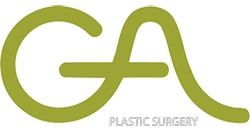Scar reconstruction is a group of procedures performed by a plastic surgeon aiming to improve the appearance of a scar anywhere on the human body. Different types of disfigurement that a scar may present are: discoloration, surface abnormalities, hypertrophy or development of keloid. The plastic surgeon may improve the aesthetic appearance of these problematic areas either with surgical procedures or with non invasive therapies.
Hypertrophic scars are caused from high concentration of scar tissue accumulated at the traumatic area. Usually they are raised, red, may cause discomfort and may extend in width in time. Their color may differ and they may present overpigmented and dark to discolored and vary pale.
Keloid scars are usually larger from hypertrophic scars. They may cause pain, itch and rippling of the nearby skin. They extend over the initial trauma or surgical wound. They may develop anywhere on the human body, but they develop commonly in areas there subcutaneous tissues are confined, such as the face, neck, ears, shoulder and chest.
Scar contraction is a pathological state during which skin and subcutaneous tissues create traction forces during healing process. Usually a scar is contracted when significant amount of tissue is lost or severely damaged, in burns or when a scar is sutured over a joint restricting motion of digits, elbows, shoulders, knees and neck.
Depending on the type of disfigured scar the plastic surgeon will suggest the appropriate surgical or non-invasive treatment to achieve the best possible aesthetic and functional outcome.

